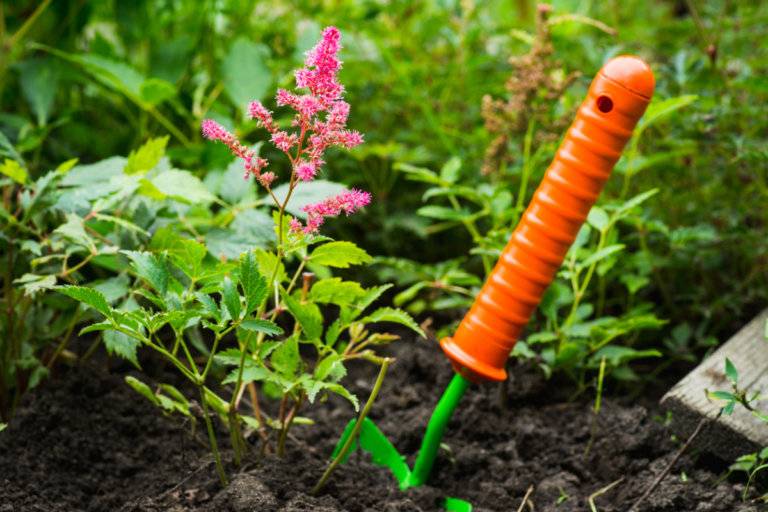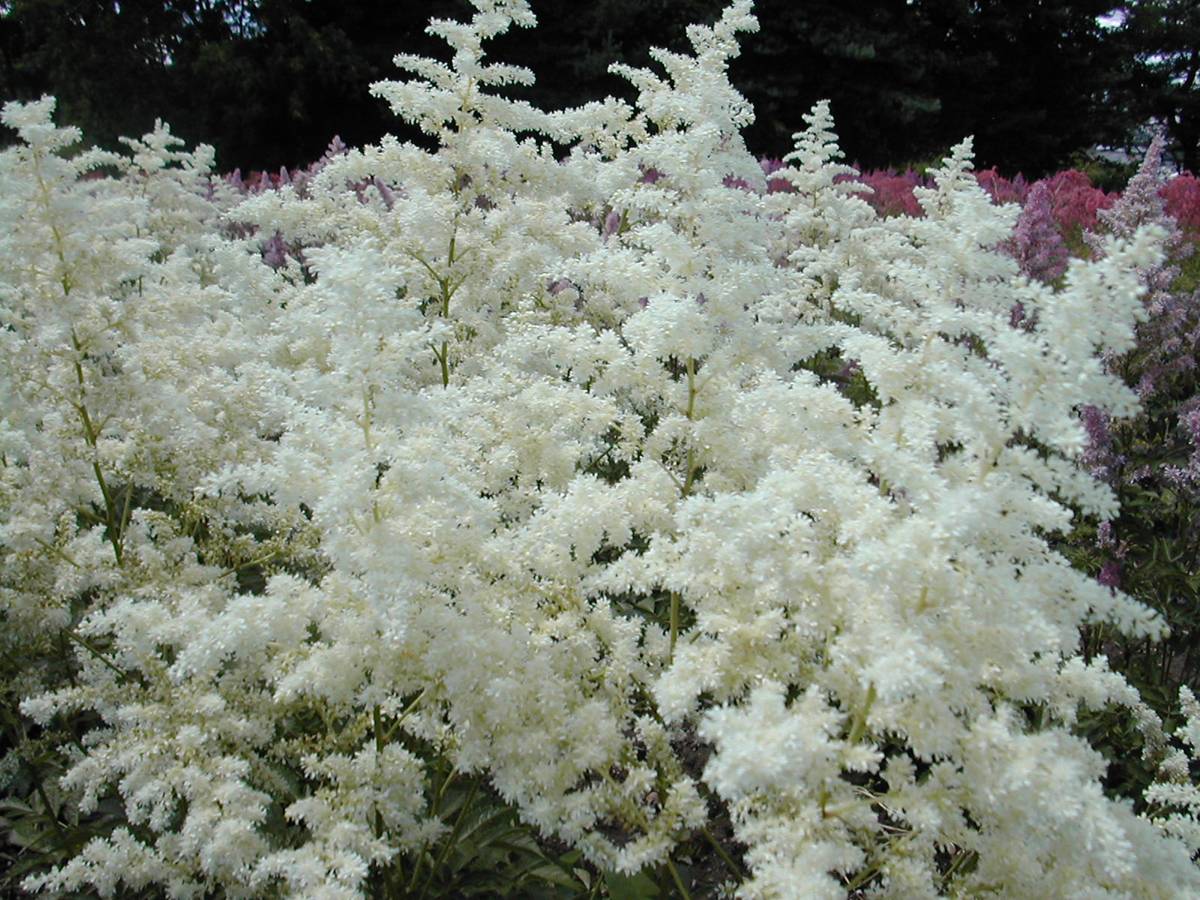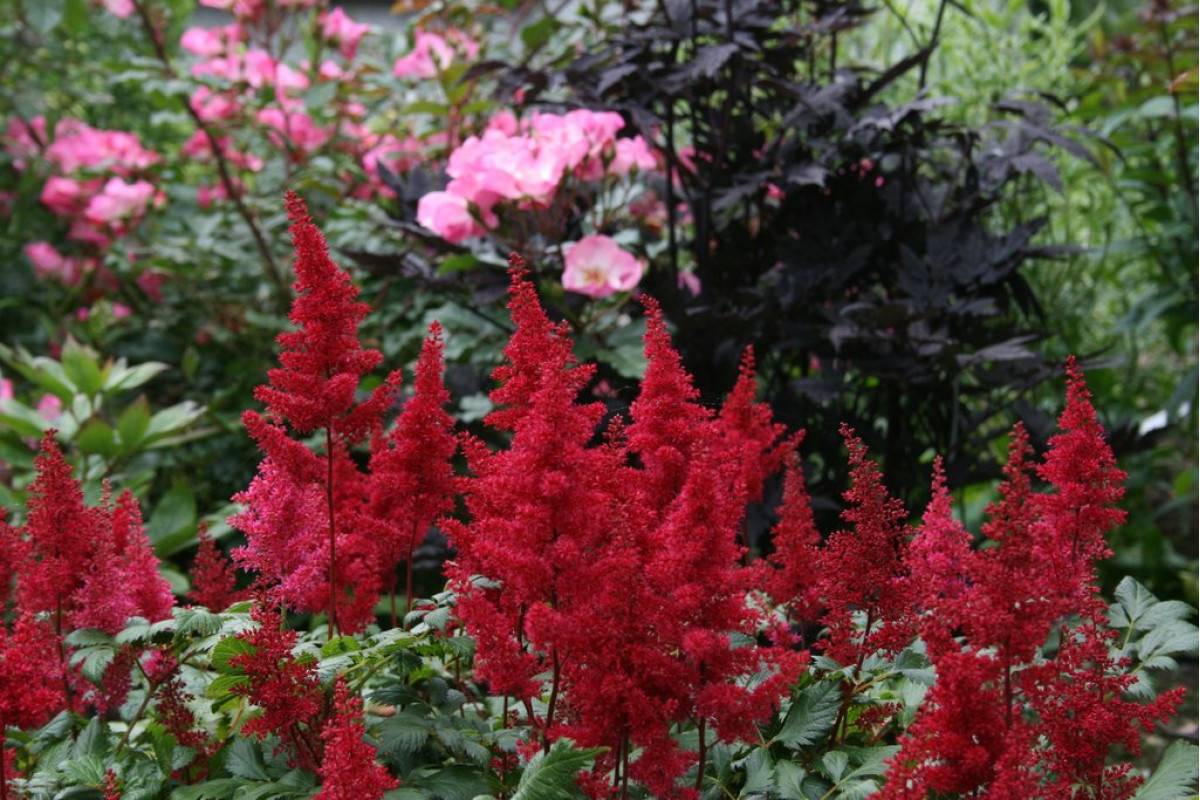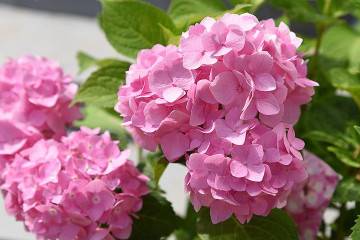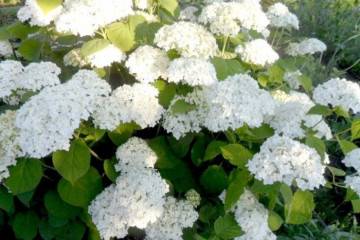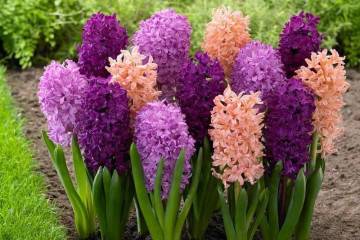Chinese astilba
Content:
Astilba Chinese is distinguished by bright large inflorescences. Such a plant will decorate any landscape design. On the flowerbed, spreading bushes will be clearly visible from anywhere in the garden. Another name for the species is spirea. The varieties are distinguished by their unpretentiousness, endurance and high frost resistance.
Description of the flower
Astilba chinensis is a representative of herbaceous plants that are intended for outdoor cultivation. It is an ideal flower for areas where there is little sun and for decorative gardening.
In nature, it is found throughout East Asia - in Japan, China, Korea. Astilbe was brought to Europe only at the beginning of the 19th century. The plant quickly gained popularity and began to be used in landscape design.
Features of varieties of Chinese astilba:
- height from 30 to 100 cm;
- openwork bright green or emerald leaves;
- elongated candle-shaped inflorescences;
- flowers are white, pink, lilac. They differ in their small size, 4-5 mm in diameter;
- honey plant, so it can be planted next to the apiary.
Care features
Growing astilba is possible even for novice growers. The plant is easily adaptable to any terrain. Calmly transfers shaded places, you can make a semi-shade shadow.
The height of this species does not exceed 50 cm, so it does not need frequent transplantation. A plant can stay in one place for up to 7 years. The soil can only be fertilized with organic matter - peat, humus, manure.
As the root system germinates, you need to add soil. This should be done once a year. Before planting, a layer of expanded clay or broken glass is laid on the bottom of the pit (its depth should be 0.3 m).
The plant needs constant watering. It is important that the water does not stagnate at the roots, therefore a drainage layer is necessary. Astilba grows not only outdoors. It can be planted in pots and flowerpots. In this case, the care will be the same.
Chinese astilba and Japanese astilba should not be confused. Japanese varieties are stunted (up to 40 cm), they need slightly acidic soil, the color range is limited to pink, white and cream shades.
Astilba: varieties and types
Chinese Astilba in Latin Astilbe chinensis. This group includes different varieties that differ not only in the color of the petals, but also in other characteristics. Therefore, it is necessary to carefully study the description of the plant before buying it.
Different varieties can be planted in the garden, which will help create a beautiful and harmonious composition.
Astilba Chinese Pumila
It is a low herbaceous perennial plant. Reaches a height of 35 cm, stolons reach 20 cm. Grow quickly in free space. In two seasons, this variety easily fills 1 m². The leaves are collected in a rosette and reach a length of 15 cm.
Astilba has small flowers, they are lilac with a mild aroma.
The care of the variety does not differ from the standard one. The plant needs to be replanted every five years. It can also be used in cut form.
Milk & Honey
The plant grows up to 1 m.Its key feature is its large paniculate inflorescences, which are cream-colored with a white tint. Astilbe of this variety blooms magnificently and beautifully. The foliage is light green, which darkens over time.
Like other varieties, Milk & Honey is propagated by seed, rhizome division or cuttings. Due to the fact that astilba can be presented in different colors, the gardener gets the opportunity to create beautiful compositions. So, astilbe pink will go well with astilba Milk and Honey. These varieties can be planted near trees, bushes, or apart in flower beds. A delicate creamy shade will make Astilba Pomegranate stand out well. Dark green glossy foliage with beautiful flowers will become even richer.
Purplekerts
Refers to late-flowering varieties, since the flowering period occurs in mid-July and lasts until the end of August. The plant reaches a height of 130 cm. The flowers are bright purple, purple with a silvery sheen. With such astilbes, you can highlight the border of the site.
Vision in White and Diamant
This also applies to late flowering varieties. Plant height 40 cm. Inflorescences are large, fluffy, dense, they are painted in a creamy white color. The variety easily tolerates bright sun and short drought.
Vision in White goes well with Astilba Weiss Gloria, which grows up to 75 cm. This combination allows you to make a multi-stage composition. A slight addition of a yellowish tint only decorates the flowers.
Using flowers of the same shades allows you to create beautiful compositions.
Dauria
Reaches a height of 1 m, leaves are compound, trifoliate and divided. Inflorescences are small lilac, pink or crimson. Refers to late flowering varieties. Requires special care: a shaded area, loamy soil is required.
Can be combined with Astilba America, which is compact and has delicate pink and white inflorescences.
Visions in Pink and Montgomery
The peculiarity of the variety is the delicate pink color of the inflorescences. It unfolds beautifully against the background of coniferous trees. Reaches a height of 50 cm, leaves are dark green, they are covered with small villi. It begins to bloom from the beginning of June.
The Montgomery variety grows in the form of a small bush. Its height is 80 cm, the flowers are painted in a rich pink color. Such a plant can be used to isolate Vision In Pink.
Astilba Montgomery blooms from May to August, which is why it is often used to create a hedge. The peculiarity of these species is that they combine well with each other. What matters is that they need the same care.
Purple Rhine
The plant reaches a height of 2 m. The inflorescences are bright, rich purple hue. It begins to bloom from early July to mid-July. The variety got its name for its unusual beautiful inflorescences. They are small in different purple hues and really look like raindrops.
In landscape design, contrasting combinations are often used. Therefore, Astilba Amethyst with lilac inflorescences will well highlight the dark color of Pearl Rhine. With their help, it will turn out to create geometric patterns.
Astilba Fanal
The plant reaches a height of 60 cm. It blooms only in July for a short time, about 20 days. Therefore, this variety is used to decorate flower beds and grow for cutting into bouquets. This variety is beautiful and in a non-flowering form.
When choosing a specific variety of astilba, you need to carefully read the description. The names are subject to change, as they are often corrected in botanical reference books.
Astilbe Chinese are distinguished by a wide variety of colors, unpretentiousness and endurance. Such flowers will adorn any garden or flower bed. This species is a perennial and will not have to be planted again next year.

